Steven Haulenbeek: Spacerocks and the Creation of Irrepressible Contentment
“Design is an arena of the greater art world that has the ability to touch all people. Not just those who choose to pay the fee and walk through the doors of the museum. Design can change lives, or at the very least, enhance life,” according to designer Steven Haulenbeek. In an economic crisis when people are cutting back, society questions the need for seemingly unnecessary purchases. Design and designers confront particularly hard times, faced with the necessity of defending the value and importance of their work.
Spacerocks. Designed by Steven Haulenbeek.
In the words of Haulenbeek, “In this new design era, we have to produce objects based on new criteria. Design is an art.” “I am concerned with the conceptualization and development of objects that will create wonderment and irrepressible contentment,” claims designer Haulenbeek. Considering the amount we spend in therapy (and oftentimes still leave crying), the value of this “irrepressible contentment,” is not to be underestimated. Haulenbeek’s Spacerocks were inspired by a naturally occurring phenomenon that so fascinated President “W,” he boarded Air Force One almost immediately to see it. “In December of 2005 a shower of meteorites speckled the terrain of the upper Midwest,” making for an unusual spectacle of bright shining piles.
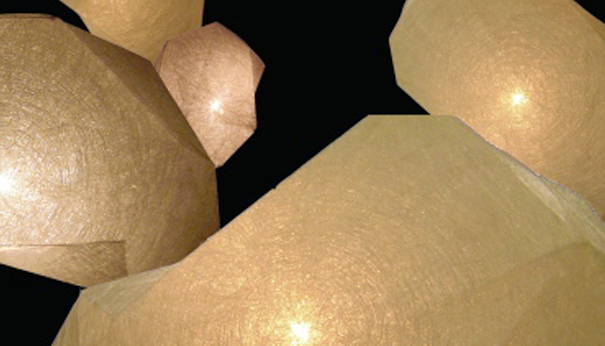
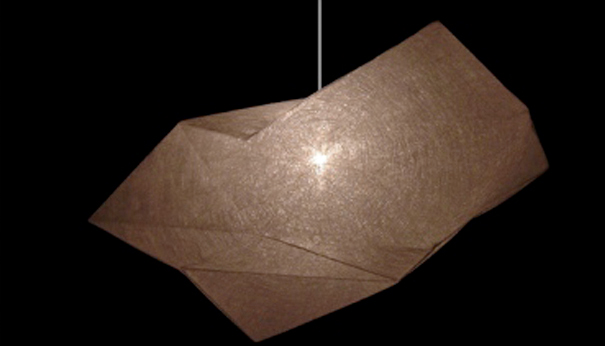
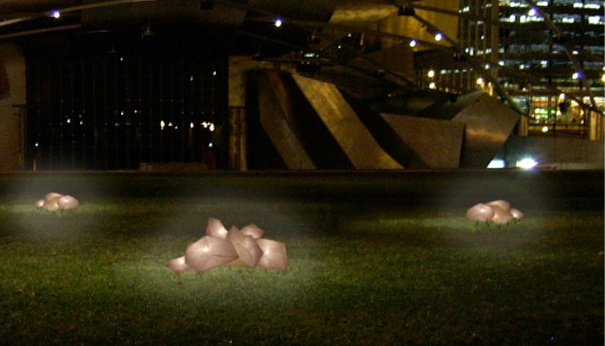
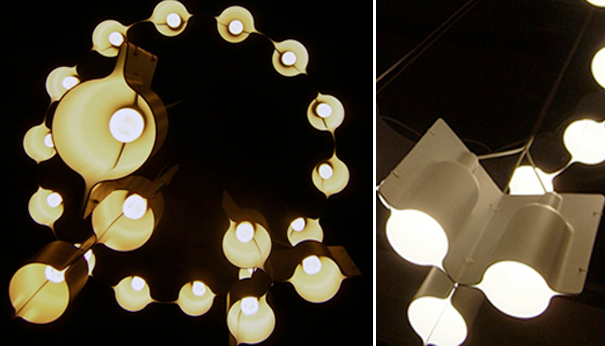
Dubbot Modular lighting system. Designed by Steven Haulenbeek.
The piles have since been ground up, mixed with cement, and poured to become the shiny sidewalks of Hollywood. Despite their short-lived glory, Haulenbeek’s Spacerocks allow this spectacle to live on, replicating the effect of the phosphorescent warm glow. Through a series of studies, Haulenbeek discovered the halo effect of Colbond’s non-woven carpet backing, occurring when a light is placed behind the fabric. It maintains its radial shape as the viewer moves around the object, even when bending over corners and creases. Haulenbeek’s series of studies and experiments have yielded this collection of lighting fixture that engages the viewer phenomenally, able to be placed on the ground, on a table, or hung like a pendant.
Haulenbeek’s latest work cannot go unmentioned. Let’s face it: many of us get bored and need change. For me this sometimes comes in the form of haircuts, having recently trimmed off somewhere between 6 and 8 inches. Our living spaces sometimes need similar updating to dispel the feeling of tiredness or boredom that may arise. This is where modular designs seem particularly brilliant. Steven Haulenbeek’s Dubbot Modular lighting system is created using one replicated module to accomplish several different situational lighting applications, thereby doing for lighting what I Make Studio’s Octavo does for furniture. According to the designer, “The parts are to be assembled by the purchaser and allow endless lighting possibilities. They can also be taken apart and reassembled when one configuration grows tired.” Made from post-consumer polypropylene and designed for disassembly, its parts nest together, allowing the entire piece to be packed down to a fraction of its size for ease of transport.
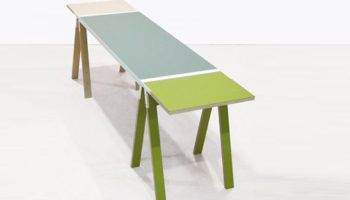
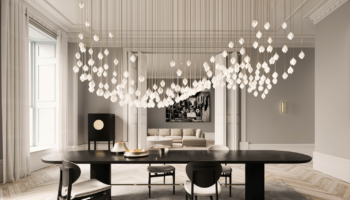


Leave a Reply